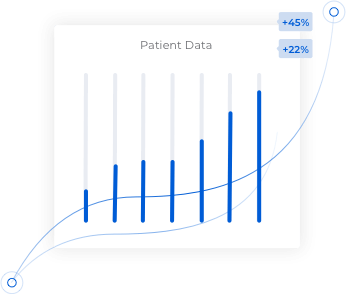This module is completed when entering the patient registry and updated annually for children under ten then every two years. Information is collected on the methods of communication used, the efficacy of those methods (including specific questions on AAC).
4.5.1. Speech,Language and Communication (ANGBEHDEVSPEECHLANGUAGE)
| No | Code | Question | Response |
| 4.5.1.3 | ANGBEHDEVALLLANG | Please indicate all language communication forms used | 1 – Moans; 2 – Babbles ; 3 – Uses an intentional sound to attract attention; 4 – Single words ; 5 – 2-3 word phrases; 6 – Longer phrase speech |
| 4.5.1.5 | ANGBEHDEVNUMWORDS | How many words (or word approximations)? | 1 – 1-5; 2 – 5-10; 3 – More than 10 Range/RadioWidget; ANGNUMWORDSPVG) |
| 4.5.1.6 | ANGSpeakFrequency | How often do they use words or word approximations | 1 – All the time; 2 – Most of the time; 3 – Some of the time; 4 – Rarely; 5 – Never; 6 – Unknown |
| 4.5.1.7 | ANGSpeakAge | At what age did they say their first word? | |
| 4.5.1.2 | ANGBEHDEVALLLANG | If yes, please indicate their most effective verbal language communication. | 1 – Moans; 2 – Babbles ; 3 – Uses an intentional sound to attract attention; 4 – Single words ; 5 – 2-3 word phrases; 6 – Longer phrase speech |
| 4.5.1.4 | ANGBEHDEVBESTUNDERSTANDING | Please indicate their most effective ability to respond to requests. | 1 – Single word such as no; 2 – Simple phrase command such as “Don’t touch”; 3 -Commands – single step- longer sentence i,e, “Go to your room now”; 4 -Commands – 2 step e.g “Go to your room and bring back your water bottle.”; 5 – Commands – 3 step; 6 – None of the above |
| 4.5.2.11a | ANGBEHDEVPREFCOMMBEST2 | What is your child/ adult’s method of communicating with you? Check all that apply | 1 – Spoken words; 2 – Gestures; 3 – Signing; 4 – Visual pictures; 5 – Eye tracking devices; 6 – Low tech AAC ; 7 – Mid tech ; 8 – High tech AAC |
4.5.2. Please rate your child/ adult ability to use the following communication methods/systems: (ANGBEHDEVCOMMUNICATION)
| No | Code | Question | Response |
| 4.5.2.1 | ANGBEHDEVCOMSpoken | Spoken words | 1 – Doesn’t use; 2 – Rarely uses; 3 – Uses for single requests or to express basic wants, needs, observations and ideas regularly; 4 – Communicates effectively with known people; 5 – Communicates effectively with known and unknown people |
| 4.5.2.2 | ANGBEHDEVCOMGesture | Gestures | As above |
| 4.5.2.3 | ANGBEHDEVCOMSigning | Signing | As above |
| 4.5.2.4 | ANGBEHDEVCOMVisPic | Visual pictures | As above |
| 4.5.2.7 | ANGBEHDEVCOMEyeTrack | Eye tracking devices | As above |
| 4.5.2.8 | ANGBEHDEVCOMLowTech | Low tech AAC (light tech or paper based, e.g. PODD books, core vocab boards, aided language displays) | As above |
| 4.5.2.9 | ANGBEHDEVCOMMidTech | Mid tech (big mark switches, tech talks or voice output) | As above |
| 4.5.2.10 | ANGBEHDEVCOMHighTech | High tech AAC (e.g. Dynamic display, iPad, Novachat Tobii) | As above |
4.5.3. Assisted and Augmented Communication (AAC) Usage (ANGCOMACCINDIV)
| No | Code | Question | Response |
| 4.5.3.1 | ANGAACSL | Has your child/adult participated in speech-language therapy before? | 1 – Yes; 2 – No; 3 – Unknown |
| 4.5.3.2 | ANGAACCM | Have you heard of the Communication Matrix tool? https://communicationmatrix.org/ | 1 – Yes, and I have completed it myself; 2 – Yes, and it has been completed by a third party ; 3 – Yes, I have heard about it but I have not completed it; 4 – No, I have never heard of it |
| ANGCMMATRIX | If you have participated in the Communication Matrix as a caregiver, please record your Matrix ID | ||
| ANGCMDATE | Administration Date | ||
| ANGCMTOTAL | Total Score | ||
| ANGCMPERCENT | Percentage | ||
| 4.5.3.3 | ANGAACUse | Does your child/ adult use a form of Augmentative and Alternative Communication ? | 1 – Yes; 2 – No ; 3 – Unsure what AAC is and if it is helpful |
| 4.5.3.4 | ANGAACInterest | If you have not used AAC, are you interested in using AAC with your child/ adult? | 1 – Yes; 2 – No |
| 4.5.3.5 | ANGAACNo | Why not? | |
| 4.5.3.6 | ANGAACDeny2 | If you were denied a form of AAC therapy, what reason was given for this? | 1 – Not making progress; 2 – They were told the individual with AS was not a candidate for AAC; 3 – Need to work on skills before introducing AAC; 4 – Not ready for AAC; 5 – Other |
| 4.5.3.7 | ANGAACDenyOth | Please state | |
| 4.5.3.8 | ANGAACLoc | Where does your child/ adult use AAC? (Select all that apply) | 1 – Home; 2 – School; 3 – Speech therapy; 4 – Other |
| 4.5.3.9 | ANGAACLocOth | Please state | |
| 4.5.3.10 | ANGAACHome | How often do you estimate that they use AAC to communicate at Home? | 1 – All of the time; 2 – Some of the time; 3 – Rarely; 4 – Never |
| 4.5.3.10a | ANGAACHomeType | What type of AAC does your child/ adult use to communicate at home? | 2 – Gestures; 3 – Signing; 4 – Visual pictures; 5 – Eye tracking devices; 6 – Low tech AAC (light tech or paper based, e.g. PODD books, core vocab boards, aided language displays); 7 – Mid tech (big mack switches, tech talks or voice output); 8 – High tech AAC (e.g. Dynamic display, iPad, Novachat Tobii); 9-Other |
| 4.5.3.10b | ANGAACHomeOther | If other, please describe | |
| 4.5.3.11 | ANGAACSchool | How often do you estimate that they use AAC to communicate at School? | 1 – All of the time; 2 – Some of the time; 3 – Rarely; 4 – Never |
| 4.5.3.11a | ANGAACSchoolType | What type of AAC does your child/ adult use to communicate at school? | 2 – Gestures; 3 – Signing; 4 – Visual pictures; 5 – Eye tracking devices; 6 – Low tech AAC (light tech or paper based, e.g. PODD books, core vocab boards, aided language displays); 7 – Mid tech (big mack switches, tech talks or voice output); 8 – High tech AAC (e.g. Dynamic display, iPad, Novachat Tobii); 9-Other |
| 4.5.3.11b | ANGAACSchoolOther | If other, please describe | |
| 4.5.3.12 | ANGAACST | How often do you estimate that they use AAC to communicate at Speech Therapy? | 1 – All of the time; 2 – Some of the time; 3 – Rarely; 4 – Never |
| 4.5.3.12a | ANGAACSpeechType | What type of AAC does your child/ adult use to communicate at speech therapy? | 2 – Gestures; 3 – Signing; 4 – Visual pictures; 5 – Eye tracking devices; 6 – Low tech AAC (light tech or paper based, e.g. PODD books, core vocab boards, aided language displays); 7 – Mid tech (big mack switches, tech talks or voice output); 8 – High tech AAC (e.g. Dynamic display, iPad, Novachat Tobii); 9-Other |
| 4.5.3.12b | ANGAACSpeechOther | If other, please describe | |
| 4.5.3.13 | ANGAACHear | How did you hear about AAC? Select all that apply. | 1 – Online; 2 – At a conference; 3 – From another parent; 4 – From a teacher; 5 – From a speech therapist; 6 – From another therapist; 7 – From behavioral services; 8 – From genetics/medical doctor; 9 – Can’t remember/Unknown |
| 4.5.3.14 | ANGAACStart | How long after diagnosis did you start using AAC? | 1 – Upon diagnosis; 2 – Less than three months after diagnosis; 3 – 3-6 months after diagnosis; 4 – 7-24 months after diagnosis; 5 – 2 – 4 years after diagnosis; 6 – 5+ years after diagnosis |
| 4.5.3.15 | ANGAACFunction | For what function of communication does your child/ adult use AAC with you? Select all that apply. | 1 – Make requests; 2 – Reject/refuse; 3 – Make comments ; 4 Express emotional and physical states ; 5 – Label ; 6 – Answer questions; 7 – Call someone ; 8 – Assert independence ; 9 – Greet; 10 – Ask questions; 11 – Direct other’s actions ; 12 – Share personal experiences ; 13 – Share thoughts and ideas; 14 – Express manners |
| 4.5.3.16 | ANGAACDevice | Does your child/ adult use an electronic communication device for other purposes than AAC? Select all that apply. | 1 – Watching videos ; 2 -Listening to music; 3 – Playing games; 4 – Other |
| 4.5.3.17 | ANGAACDevOth | Please specify | |
| 4.5.3.18 | ANGAACDurCOM | On a typical day, how many hours do they spend using the device for AAC purposes? | 1 – Less than 2 hours; 2 – Between 2 and 4 hours; 3 – More than 4 hours |
| 4.5.3.19 | ANGAACDurOth | On a typical day, how many hours do they spend using the device for other purposes than AAC? | 1 – Less than 2 hours; 2 – Between 2 and 4 hours; 3 – More than 4 hours |
4.5.3. Assisted and Augmented Communication (AAC) Usage (ANGCOMACCINDIV)
| No | Code | Question | Response |
| 4.5.3.1 | ANGAACSL | Has your child/adult participated in speech-language therapy before? | 1 – Yes; 2 – No; 3 – Unknown |
| 4.5.3.2 | ANGAACCM | Have you heard of the Communication Matrix tool? https://communicationmatrix.org/ | 1 – Yes, and I have completed it myself; 2 – Yes, and it has been completed by a third party ; 3 – Yes, I have heard about it but I have not completed it; 4 – No, I have never heard of it |
| ANGCMMATRIX | If you have participated in the Communication Matrix as a caregiver, please record your Matrix ID | ||
| ANGCMDATE | Administration Date | ||
| ANGCMTOTAL | Total Score | ||
| ANGCMPERCENT | Percentage | ||
| 4.5.3.3 | ANGAACUse | Does your child/ adult use a form of Augmentative and Alternative Communication ? | 1 – Yes; 2 – No ; 3 – Unsure what AAC is and if it is helpful |
| 4.5.3.4 | ANGAACInterest | If you have not used AAC, are you interested in using AAC with your child/ adult? | 1 – Yes; 2 – No |
| 4.5.3.5 | ANGAACNo | Why not? | |
| 4.5.3.6 | ANGAACDeny2 | If you were denied a form of AAC therapy, what reason was given for this? | 1 – Not making progress; 2 – They were told the individual with AS was not a candidate for AAC; 3 – Need to work on skills before introducing AAC; 4 – Not ready for AAC; 5 – Other |
| 4.5.3.7 | ANGAACDenyOth | Please state | |
| 4.5.3.8 | ANGAACLoc | Where does your child/ adult use AAC? (Select all that apply) | 1 – Home; 2 – School; 3 – Speech therapy; 4 – Other |
| 4.5.3.9 | ANGAACLocOth | Please state | |
| 4.5.3.10 | ANGAACHome | How often do you estimate that they use AAC to communicate at Home? | 1 – All of the time; 2 – Some of the time; 3 – Rarely; 4 – Never |
| 4.5.3.10a | ANGAACHomeType | What type of AAC does your child/ adult use to communicate at home? | 2 – Gestures; 3 – Signing; 4 – Visual pictures; 5 – Eye tracking devices; 6 – Low tech AAC (light tech or paper based, e.g. PODD books, core vocab boards, aided language displays); 7 – Mid tech (big mack switches, tech talks or voice output); 8 – High tech AAC (e.g. Dynamic display, iPad, Novachat Tobii); 9-Other |
| 4.5.3.10b | ANGAACHomeOther | If other, please describe | |
| 4.5.3.11 | ANGAACSchool | How often do you estimate that they use AAC to communicate at School? | 1 – All of the time; 2 – Some of the time; 3 – Rarely; 4 – Never |
| 4.5.3.11a | ANGAACSchoolType | What type of AAC does your child/ adult use to communicate at school? | 2 – Gestures; 3 – Signing; 4 – Visual pictures; 5 – Eye tracking devices; 6 – Low tech AAC (light tech or paper based, e.g. PODD books, core vocab boards, aided language displays); 7 – Mid tech (big mack switches, tech talks or voice output); 8 – High tech AAC (e.g. Dynamic display, iPad, Novachat Tobii); 9-Other |
| 4.5.3.11b | ANGAACSchoolOther | If other, please describe | |
| 4.5.3.12 | ANGAACST | How often do you estimate that they use AAC to communicate at Speech Therapy? | 1 – All of the time; 2 – Some of the time; 3 – Rarely; 4 – Never |
| 4.5.3.12a | ANGAACSpeechType | What type of AAC does your child/ adult use to communicate at speech therapy? | 2 – Gestures; 3 – Signing; 4 – Visual pictures; 5 – Eye tracking devices; 6 – Low tech AAC (light tech or paper based, e.g. PODD books, core vocab boards, aided language displays); 7 – Mid tech (big mack switches, tech talks or voice output); 8 – High tech AAC (e.g. Dynamic display, iPad, Novachat Tobii); 9-Other |
| 4.5.3.12b | ANGAACSpeechOther | If other, please describe | |
| 4.5.3.13 | ANGAACHear | How did you hear about AAC? Select all that apply. | 1 – Online; 2 – At a conference; 3 – From another parent; 4 – From a teacher; 5 – From a speech therapist; 6 – From another therapist; 7 – From behavioral services; 8 – From genetics/medical doctor; 9 – Can’t remember/Unknown |
| 4.5.3.14 | ANGAACStart | How long after diagnosis did you start using AAC? | 1 – Upon diagnosis; 2 – Less than three months after diagnosis; 3 – 3-6 months after diagnosis; 4 – 7-24 months after diagnosis; 5 – 2 – 4 years after diagnosis; 6 – 5+ years after diagnosis |
| 4.5.3.15 | ANGAACFunction | For what function of communication does your child/ adult use AAC with you? Select all that apply. | 1 – Make requests; 2 – Reject/refuse; 3 – Make comments ; 4 Express emotional and physical states ; 5 – Label ; 6 – Answer questions; 7 – Call someone ; 8 – Assert independence ; 9 – Greet; 10 – Ask questions; 11 – Direct other’s actions ; 12 – Share personal experiences ; 13 – Share thoughts and ideas; 14 – Express manners |
| 4.5.3.16 | ANGAACDevice | Does your child/ adult use an electronic communication device for other purposes than AAC? Select all that apply. | 1 – Watching videos ; 2 -Listening to music; 3 – Playing games; 4 – Other |
| 4.5.3.17 | ANGAACDevOth | Please specify | |
| 4.5.3.18 | ANGAACDurCOM | On a typical day, how many hours do they spend using the device for AAC purposes? | 1 – Less than 2 hours; 2 – Between 2 and 4 hours; 3 – More than 4 hours |
| 4.5.3.19 | ANGAACDurOth | On a typical day, how many hours do they spend using the device for other purposes than AAC? | 1 – Less than 2 hours; 2 – Between 2 and 4 hours; 3 – More than 4 hours |
4.5.4 Assisted and Augmented Communication (AAC) Usage by Others (ANGCOMACCOTH)
| No | Code | Question | Response |
| 4.5.4.1 | ANGAACPerson | Who else uses the AAC to communicate with your child/ adult? Select all that apply. | 1 – Family members; 2 – Friends; 3 – School teachers; 4 – Speech therapists; 5 – Caregivers; 6 – Other |
| 4.5.4.2 | ANGAACPerOth | Please specify. | |
| 4.5.4.3 | ANGAACTrain | Did you, as a caregiver, receive training on how to use AAC with your child/ adult? | 1 – Yes; 2 – No |
| 4.5.4.4 | ANGAACTrainWho | Please give details of who provided the AAC training to you. Select all that apply. | 1 – School; 2 – AAC company directly; 3 – General AAC workshops; 4 – Online training; 5 – Speech therapist; 6 -Other (AACTraining) |
| 4.5.4.5 | ANGAACTrainOth | Please specify. | |
| 4.5.4.6 | ANGAACTrainDur | How much training have you, as a caregiver, had on using AAC? | 1 – None; 2 – Self-trained via e.g. YouTube training; 3 – Up to 1 hour; 4 – Up to 8 hour (1-full day training); 5 – Several days of training |
| 4.5.4.7 | ANGAACConfident | How confident/comfortable are you, as a caregiver, in using AAC with your child/ adult? | 1 – Limited; 2 – Confident; 3 – Highly-confident |





